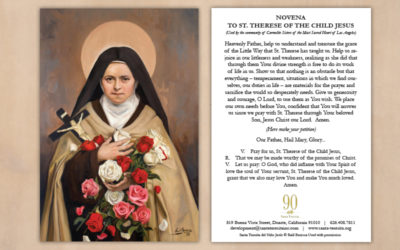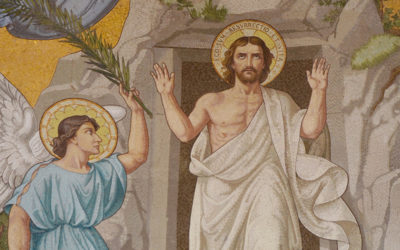St Jude and Elderly Care
Looking at a statue of St. Jude, you may have noticed that he often sports some sort of bump on the top of his head. You’ve probable made or at least heard others make various interpretations of this bump, such as, “bad hair day?”, “does he have a mohawk?” or “did someone hit him on the head or something?” The fact of the matter is, St. Jude neither had bad hair, a mohawk, nor a concussion. Upon closer examination, this bump is actually a flame! A flame none other than the famous Pentecost flame, which descended upon the apostles in the upper room and brought the fire of the Holy Spirit, the Consoler, into their souls.
All the apostles (except Judas, of course) where present for this inflammation on Pentecost, yet only Jude has eternally donned the Pentecost flame as a sign of his identity. He is also depicted holding a small image of Christ; a tradition which comes from the story of Jude bearing a cloth with the image of Jesus to the sick king of Edessa, thereby bringing about his bodily healing.
These signs of St. Jude are lessons for those of us encountering our neighbor, (which should be all of us!) but in a special way, these signs are Jude’s lesson for those of us who serve the vulnerable, and in the case of the Carmelite Sisters, the elderly. We who care for the elderly care for those who are often without hope, just like St. Jude, patron saint of impossible, hopeless cases. And we who care for the elderly, like Jude, must carry close to our heart the image of Christ, and carefully keep alive on our heads that flame of the Holy Spirit.
First, why the image of Christ? In the elderly, we encounter the image of God, of Jesus. Yet this is not easy to remember. Caring for others can be exhausting, physically, emotionally, and spiritually. Not to mention, our attempts to be a help to others can sometimes be returned with ingratitude, a figurative (or possibly literal) punch in the face. During our moments of exhaustion, of hurt from lack of appreciation, it is so critical to keep that image of the Lord Jesus close in mind and heart. Even having a physical image of Him nearby is a good idea. We must be conscious that He is the one we serve in these people, and whatever their reaction may be, He is grateful to us.
Second, why the flame? Now, please don’t go get candle hats or anything- this one is figurative. The flame symbolizes the fire of the Holy Spirit, the presence of the Love of the Trinity in our hearts, setting us on fire, keeping us warm and alive, consoling us. In our service to the elderly, we must always keep the fire of God’s Love brightly displayed, clearly visible to those we serve. They are struggling for hope, and all worldly concepts of hope have now been stripped away. The only hope they have left is the only one that is true: the hope that God loves them. We must be the living witnesses to the elderly that God’s Love for them is REAL, though both our actions and words. We must be the tool of the Consoler. This can be in little ways, such as showing interest in their interests, admiring their grandkids, playing a game with them, complimenting an outfit; or it can be through listening to their griefs and fears, and assuring them that God loves them. He always has, and always will.
So when you get to Heaven (by God’s grace!), don’t look for a guy with a mohawk. You’ll probably end up talking to the wrong person. Look for the man with a flame on his head and a picture of Christ near his heart, and if you follow his lead, you’ll find you carry the same tokens.
Related Posts
Novena to St. Therese of the Child Jesus
Santa Teresita is celebrating its 90th anniversary on August 2nd, 2020. We were founded during an epidemic, and Providence would...
Keep Your Eyes Fixed on Him
A Reflection from Cristo Rey Resident A consequence of the coronavirus is the continued “social distancing” and quarantines that...
Finding the Silver Lining
Reflections from our Sisters Reflection on a Roseby Sister Karolyn Rose, O.C.D. I had the privilege of caring for one of our...



